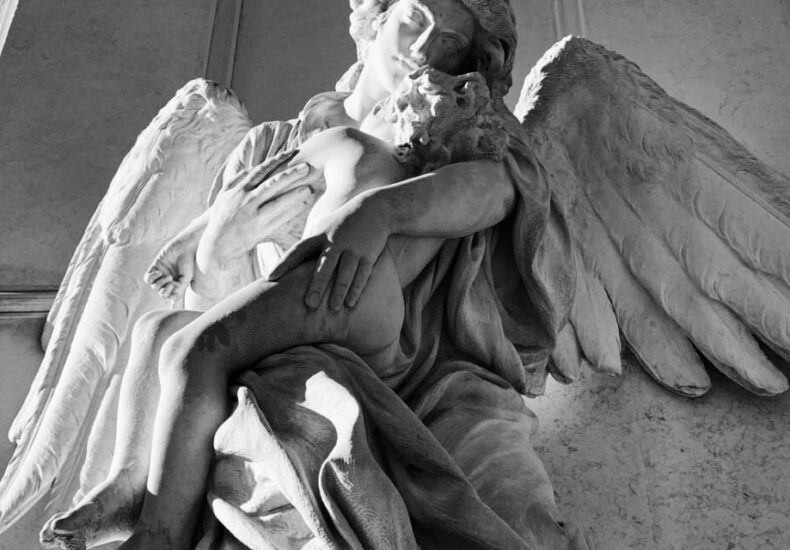
The Art of Mourning: How Cemeteries Became Open-Air Museums
Walk through the gates of any old cemetery, and you might notice something curious: it feels less like a graveyard and more like a gallery. The marble angels, neoclassical tombs, intricate ironwork, and moss-draped statues are not mere symbols of grief—they’re masterpieces. Cemeteries, once places solely for mourning, have evolved into open-air museums of art, architecture, and collective memory. But how did this transformation occur? And why do we, the living, find such beauty among the dead?
Contents
- The Birth of the Cemetery as a Cultural Space
- A Symphony in Stone: Art as a Language of Grief
- When Architecture Meets Eternity
- The Garden Cemetery Movement: Death in Bloom
- Cemeteries as Cultural Time Capsules
- The Rise of Dark Tourism: Beauty in the Macabre
- From Sacred to Secular: The Democratisation of Memory
- Why Cemeteries Matter More Than Ever
- Bottom Line
- FAQs
The Birth of the Cemetery as a Cultural Space
Let’s rewind to the late 18th and early 19th centuries—a time of both urban expansion and philosophical change. Overcrowded churchyards had become health hazards, prompting city planners and visionaries to imagine something new: landscaped cemeteries on the outskirts of cities.
The first of these modern cemeteries—Père Lachaise in Paris (1804)—was a revelation. Designed as a garden of the dead, it was both sanitary and sentimental, blending Enlightenment rationalism with Romantic aesthetics. There, visitors could stroll among tree-lined avenues, admire sculpted tombs, and reflect not only on death but on art, love, and legacy.
Soon, the trend spread across Europe and the Americas. Cemeteries like Highgate in London, Recoleta in Buenos Aires, and Green-Wood in Brooklyn became spaces where mourning met artistry—a fusion that continues to fascinate historians, artists, and wanderers today.

A Symphony in Stone: Art as a Language of Grief
Mourning is universal, but its expression varies by culture and era. In cemeteries, art becomes the language of loss—a visual poetry that tells stories words often cannot. Every angel, urn, and broken column speaks.
- Neoclassicism gave us temples and columns, evoking eternal order and beauty.
- Romanticism added emotion—weepers, draped figures, and the melancholic ruins of love.
- Victorian symbolism layered meaning upon meaning: the weeping willow for sorrow, the hourglass with wings for time’s flight, the clasped hands for reunion in the afterlife.
This aesthetic evolution turned cemeteries into museums without walls, where sculpture and sentiment coexist. The monuments are not mere memorials—they are artistic testaments to human resilience, love, and the eternal conversation between life and death.
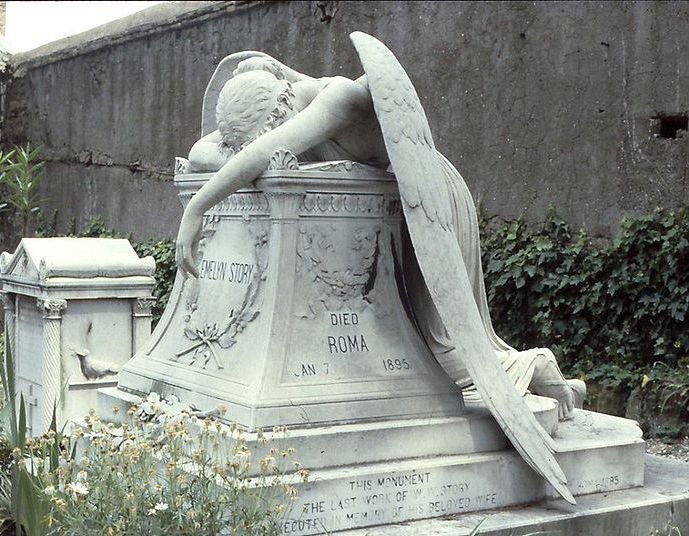
When Architecture Meets Eternity
Cemeteries are also architectural marvels. Mausoleums echo Greek temples, Gothic chapels rise like miniature cathedrals, and Art Nouveau vaults curl with organic grace. Take Staglieno Cemetery in Genoa, where realism meets transcendence in lifelike marble portraits; or Recoleta, where Buenos Aires’ elite rest in mausoleums that rival palaces.
These necropolises are not random collections of graves—they are curated landscapes, designed with intention. The layout, pathways, and sightlines follow aesthetic and moral logic: serenity, reflection, and even social order. Just as museums curate art, cemeteries curate memory.
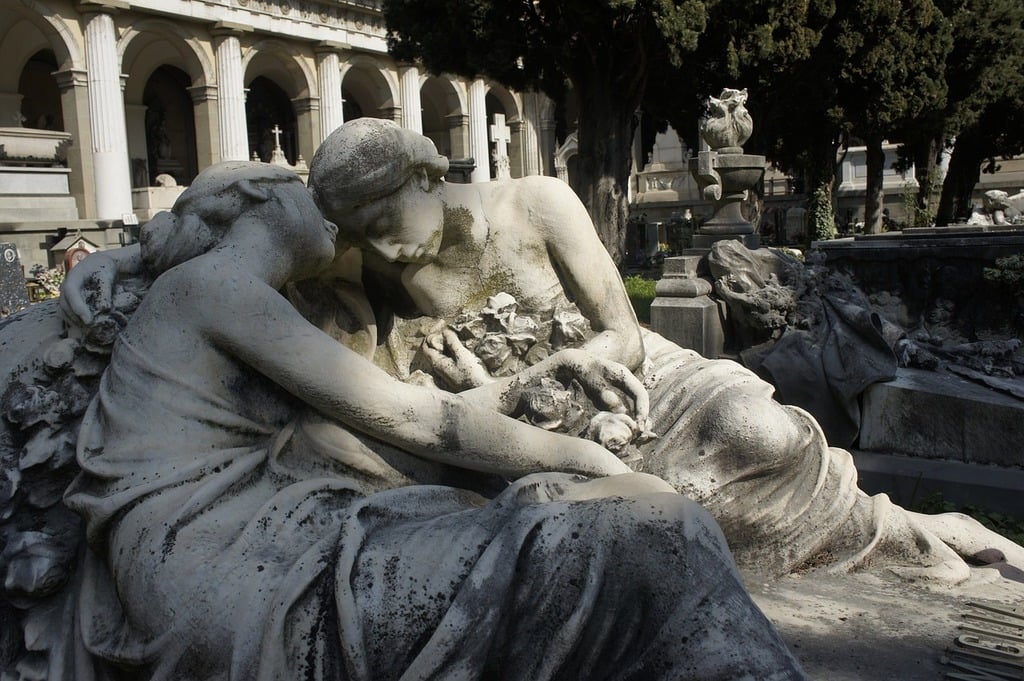
The Garden Cemetery Movement: Death in Bloom
If art gave cemeteries their aesthetic identity, nature gave them soul. The Garden Cemetery Movement of the 19th century transformed graveyards into verdant sanctuaries. Think of them as early precursors to public parks—only with more marble.
Places like Mount Auburn Cemetery in Massachusetts (1831) and Kensal Green in London (1833) embraced picturesque landscaping, blending Romantic notions of nature with Enlightenment ideals of public education.
Visitors came not only to mourn but to stroll, picnic, sketch, or philosophise. Death, in this context, was not to be feared but contemplated—a natural part of the cycle, softened by greenery and beauty. The cemetery became a didactic landscape, teaching the living through the language of art and decay.
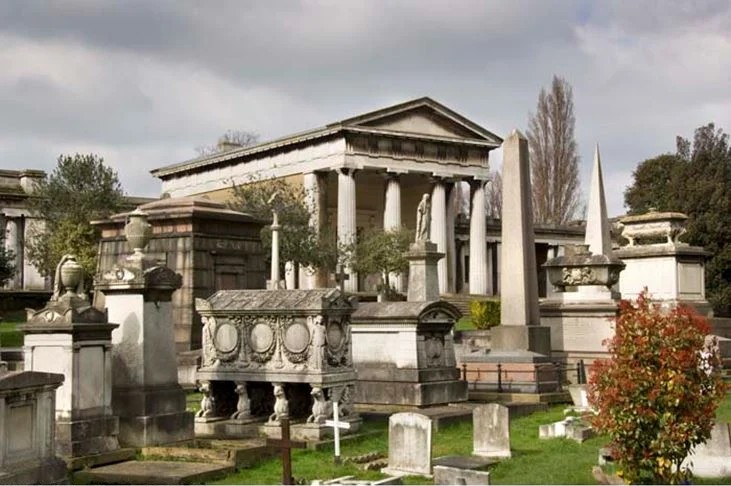
Cemeteries as Cultural Time Capsules
Every cemetery is a living archive—a chronicle of artistic trends, technological advances, and shifting social attitudes. The transition from grand marble mausoleums to minimalist plaques mirrors broader cultural shifts towards simplicity, secularism, and sustainability.
Through tombstone typography, one can trace design eras: Gothic revival scripts, Art Deco lines, or mid-century modern minimalism. Through epitaphs, one can read the changing tone of faith—from “Rest in Peace” to “Forever in Our Hearts.”
Even the materials tell stories: early wood and slate gave way to marble, granite, bronze, and today, eco-friendly composites. Cemeteries record how we’ve learned to aestheticise death—turning finality into form, grief into gallery.
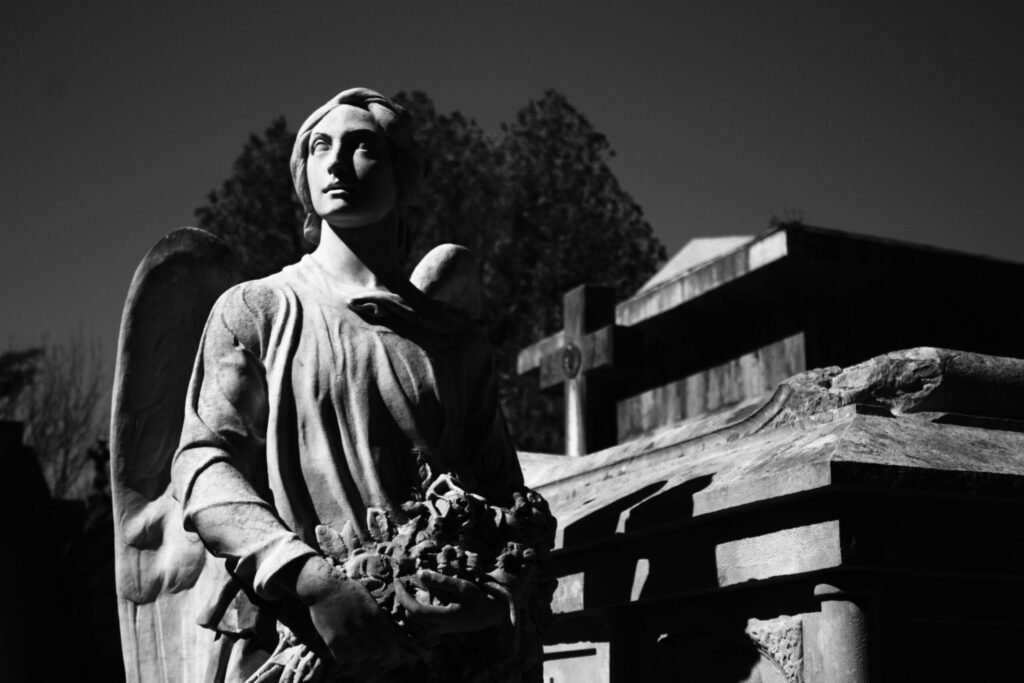
The Rise of Dark Tourism: Beauty in the Macabre
It might sound strange, but visiting cemeteries has become trendy. Known as dark tourism, this phenomenon attracts those drawn to places associated with death, tragedy, or the uncanny.
Yet, unlike battlefields or catacombs, cemeteries offer a softer sort of darkness—beauty with a melancholic twist. Tourists photograph angels, admire architecture, and seek famous graves: Jim Morrison at Père Lachaise, Eva Perón at Recoleta, Oscar Wilde under his winged sphinx.
Far from morbid, these pilgrimages reflect a human craving for connection—to history, to artistry, and to the universal truth of mortality. Cemeteries have become spaces of learning, tourism, and reflection—our most elegant reminders that art endures where flesh does not.
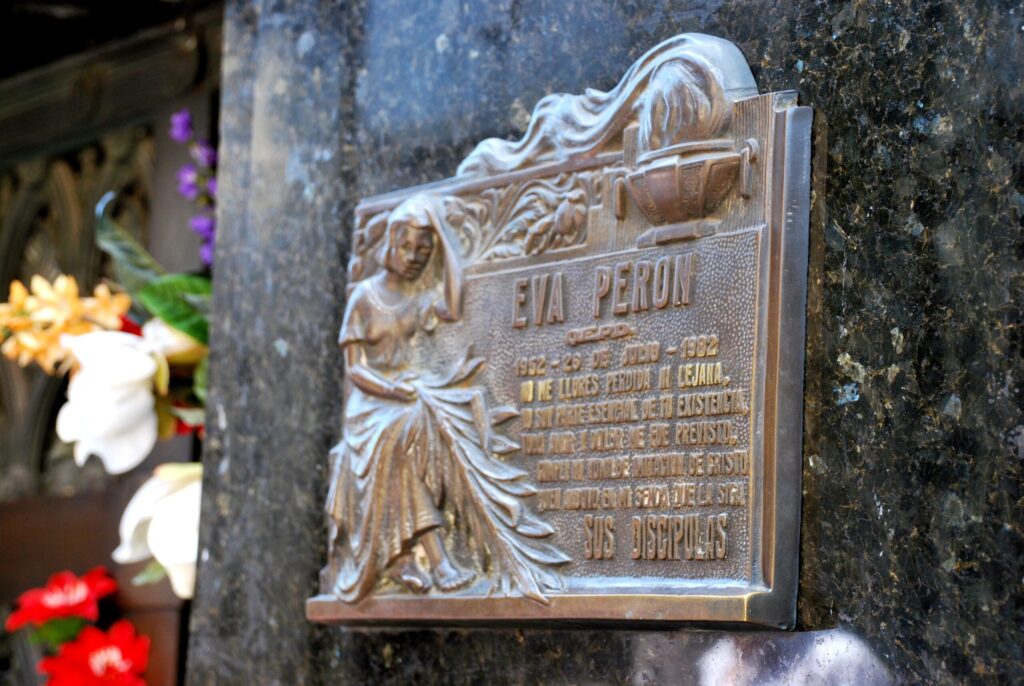
From Sacred to Secular: The Democratisation of Memory
As religion’s grip on death rituals loosened, cemeteries transformed from strictly sacred spaces into cultural landscapes. No longer bound to a single faith, they became pluralistic museums of remembrance, where symbolism transcends theology.
In modern cemeteries, art installations, photography exhibits, and even digital archives coexist with gravestones. Some cities now offer guided “art walks” through historic burial grounds, highlighting craftsmanship and cultural context.
In this way, cemeteries continue to evolve—not as relics of mourning, but as repositories of beauty, history, and identity. They challenge us to see death not as the end of creativity, but as its most haunting expression.
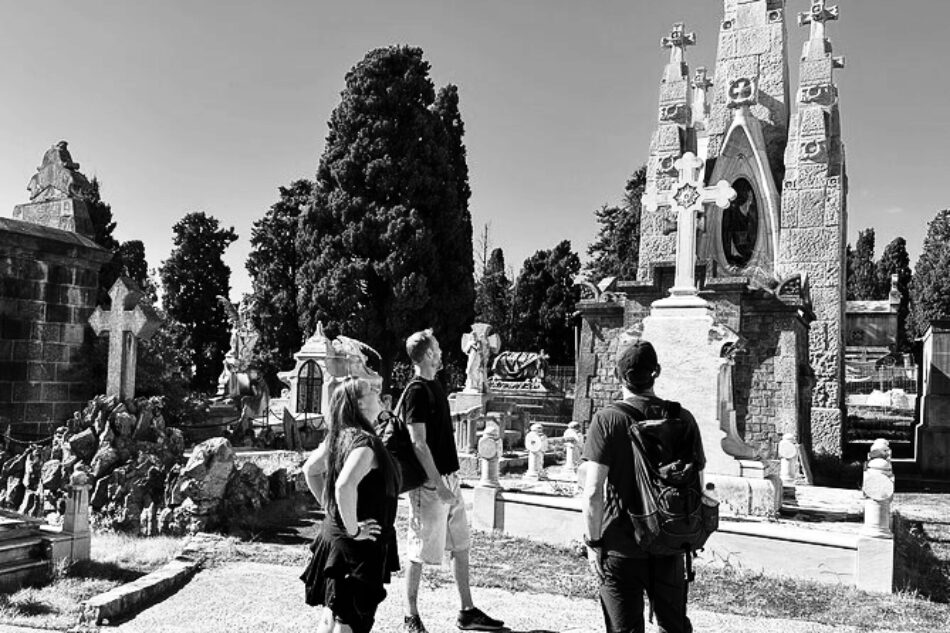
Why Cemeteries Matter More Than Ever
In our fast-paced digital era, cemeteries remain stubbornly analog—a place to slow down and look closely. They remind us that art is not only found in museums, but in the quiet gestures of remembrance.
Every tomb is a collaboration between the living and the dead: sculptors, masons, poets, and families all contributing to a collective masterpiece of memory. To walk through one is to experience art, history, and humanity intertwined—a dialogue across centuries, spoken in stone and silence.
So yes, cemeteries are for mourning—but they are also for marveling. And in that paradox lies their enduring art.
Bottom Line
Cemeteries, far from being mere resting places, are living museums of art and emotion. They chart the evolution of aesthetics, architecture, and belief—while offering solace to the living. To visit one is to step into a narrative where grief is sculpted, love immortalised, and time momentarily suspended.
In the art of mourning, beauty and loss are not opposites but companions—dancing through the corridors of marble, moss, and memory.
FAQs
Because they showcase diverse art forms—sculpture, architecture, landscaping—reflecting historical and cultural evolution, much like curated museum collections.
Père Lachaise (Paris), Recoleta (Buenos Aires), Highgate (London), Staglieno (Genoa), and Mount Auburn (Massachusetts) are often cited for their artistic and architectural grandeur.
A 19th-century movement that reimagined cemeteries as landscaped, park-like spaces designed for beauty, reflection, and public recreation.
Early art emphasised religious salvation, while later designs focus on personal legacy, emotion, and secular beauty—showing a cultural shift from fear to reflection.
Absolutely. Many cemeteries offer guided tours and serve as valuable resources for studying art history, architecture, sociology, and local heritage.

You’ve distilled a complex topic into something very manageable.